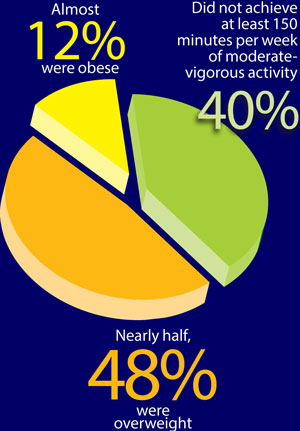18 Aug 2017 - {{hitsCtrl.values.hits}}
(Reuters Health) - Regular exercise outside of work can reduce the risk of metabolic syndrome in people whose jobs have them sitting most of the time, according to a small study from Brazil.
“If you have a sedentary occupation, especially in a sitting position for hours, you should move yourself out of work at least 150 minutes per week in a moderate intensity to mitigate the detrimental effects of sedentary behaviour at work,” Eduardo Caldas Costa from Federal University of Rio Grande do Norte in Natal told Reuters Health.

Sedentary behaviour has been associated with an increased risk for metabolic syndrome - a cluster of unfavorable markers including abdominal obesity, high blood pressure and low HDL “good” cholesterol - which, in turn, is associated with an increased risk of developing heart disease and type 2 diabetes.
The researchers investigated whether Naval workers who spent about eight hours daily seated, mostly in administrative duties, had different risks for metabolic syndrome based on their activity levels outside of work.
All the workers were men, ranging in age from 26 to 42. Out of 502 workers included in the final analysis, 201, or 40 percent, did not achieve at least 150 minutes per week of moderate-vigorous activity. Nearly half, 48 percent, were overweight and almost 12 percent were obese.

After adjusting for age, time in the job, body mass index (BMI) and tobacco use, researchers found the sedentary workers who met the physical activity recommendations were only about half as likely to have metabolic syndrome, compared to those with lower activity levels.
Workers with higher activity levels were also less likely to have abdominal obesity, high blood pressure and low HDL.
Even those who increased their activity slightly (the “insufficiently active” group) had lower blood pressure than workers who remained sedentary off the job, researchers reported in the Journal of Occupational and Environmental Medicine.
23 Dec 2024 2 hours ago
23 Dec 2024 3 hours ago
23 Dec 2024 6 hours ago
23 Dec 2024 8 hours ago